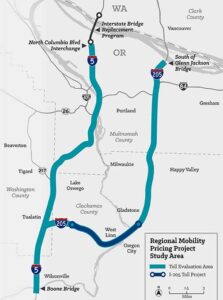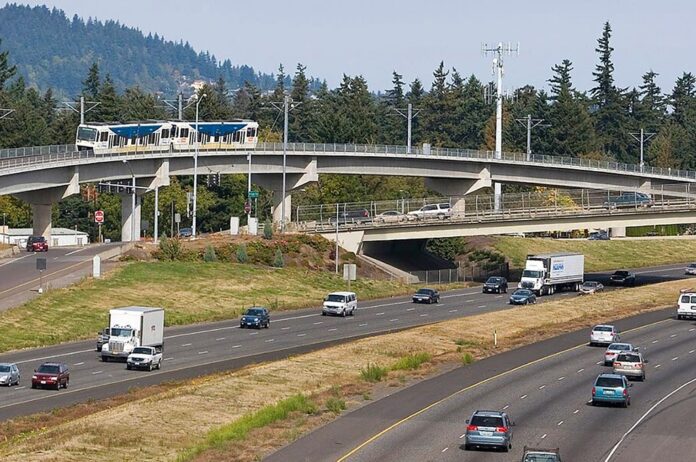The Oregon Department of Transportation (ODOT) is pressing ahead with its plan to toll a section of Interstate 205 to pay for the replacement of the Abernethy Bridge over the Willamette River along with other improvements to I-205.

The agency is also studying a separate, wider proposal to toll both Interstate 5 and I-205. This is part of a larger Regional Mobility Pricing Program that is intended to manage the number of vehicles using interstate highways in the Portland metropolitan area and help remove notorious traffic bottlenecks.
ODOT officials gave a presentation at an Oct. 26 workshop held by the Washington County Board of Commissioners. At that meeting, Della Mosier, Deputy Director of ODOT’s Urban Mobility Office, said that upcoming improvements to the Abernethy Bridge are scheduled to get underway in 2022 along with other improvements to the stretch of freeway between the Tualatin and Willamette rivers. However, actual tolling still requires federal approval under the National Environmental Policy Act (NEPA) – something that could take until the end of 2022 to achieve. The earliest actual tolling could begin would be 2024, said Toll Program Manager Lucinda Broussard.
“I-205 would be the first area that we would toll, and I would say right now we are in the planning stages,” Broussard said.
Separately, the wider Regional Mobility Pricing Program (RMPP) would studying the idea of tolling from the Boone Bridge in Wilsonville up north to the Columbia River on both I-5 and I-205. This program is independent of the first I-205 tolling plan and is intended to manage traffic enough to avoid the lengthy backups that now plague various stretches of both freeways.
“The I-205 tolling work is about how to pay for a specific set of safety and congestion improvements,” said Stephen Roberts, Director of Washington County’s Department of Land Use and Transportation. “Separately, there is the Regional Mobility Pricing Program, which is about charging people to use the roadway in an effort to keep people off of the roadway. These two things are happening in parallel.”
Broussard noted that RMPP revenue would go to a variety of uses, including dealing with traffic diversion that could occur when people use local roads to avoid tolled interstate highways. The Tolling Program is also considering a system that would allow for lower toll rates for lower income travelers, many of whom travel into Washington County for work.
“We realize about 50 percent of the workforce commutes into the county and we have to take that into consideration when setting up a toll program,” Broussard said. “It’s about removing the bottlenecks and not adding additional bottlenecks, that’s our goal for the toll program.”
Additional support for regional transit would also result from toll revenue along with future highway improvements, she said, most notably the replacement of the narrow Boone Bridge in Wilsonville, the I-5 Rose Quarter project and the Interstate Bridge Replacement program.
However, federal approval is required for this program, which would be one of the first in the country to toll highways for the express purpose of congestion management. Toll rates are not likely to be established until the end of 2024 or early 2025.
Meanwhile, opponents of tolls are starting to mobilize in the Clackamas County suburbs. Most notably in the form of the No Toll Army, which held a public rally in early October at the west end of the Oregon City Bridge on Highway 43.
West Linn-based organizer Dean Suhr says it is important to head off any initial tolling schemes based on vehicle transponders. Once such a program is in place, he said, it would be trivial for ODOT to expand tolling to other roadways around Oregon.



















